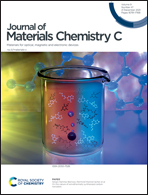Photoactivated materials and sensors for NO2 monitoring
Abstract
This review presents the recent research efforts and developments in photoactive materials for sensing ppb concentrations of NO2. It also includes the fundamentals of photoactivated gas sensing and enabling technologies for achieving light-activated gas microsensors. The discussion addresses the most common strategies to improve photoactivity in gas-sensitive materials, including tuning surface vacancies in semiconductor materials and forming nanoscale interfaces based on metal–semiconductor or semiconductor–semiconductor junctions. The data point to gas-sensitive materials containing ZnO as the most representative NO2 photoresponsive semiconductors. Besides, the review summarises novel photoactive materials with promising NO2 sensitivity, such as transition metal dichalcogenides, organic semiconductors, and organo-functional structures. The literature shows that photoactivated gas sensors have competitive detection limits and form factors with their commercial counterparts. Further improvements to these sensing components by using material engineering and microfabrication technologies are forecasted to enable their practical applications.



 Please wait while we load your content...
Please wait while we load your content...